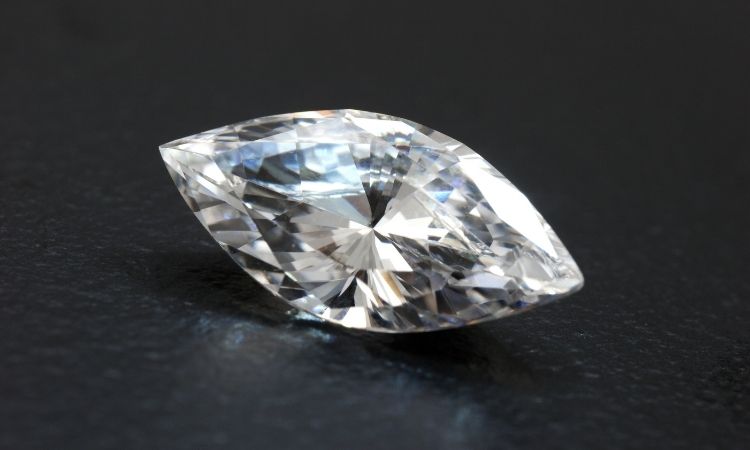When Does a Pink Sapphire Become a Ruby? Expert Guide
When Does a Pink Sapphire Become a Ruby?
Pink sapphires and rubies are among the world’s most coveted gemstones, admired for their vivid colors, durability, and timeless appeal. But what actually sets them apart? At what point does a pink sapphire cross the line and become a ruby? This comprehensive guide will unravel the science, history, and industry standards behind this fascinating distinction, empowering you with the knowledge to make informed jewelry decisions.
The Corundum Family: Foundation of Sapphires and Rubies
Both pink sapphires and rubies belong to the mineral family corundum, renowned for its exceptional hardness (second only to diamond) and resilience, making it ideal for fine jewelry. Despite being composed of the same mineral, corundum stones are classified either as sapphires or rubies depending on their color and, to some extent, their origin.
- Corundum Hardness: 9 on the Mohs scale (just below diamond)
- Common Colors: Corundum occurs in a spectrum of shades, but only red is called ‘ruby’ – all other colors, including blue, yellow, and pink, are classified as ‘sapphire’
Color: The Key Difference Between Pink Sapphire and Ruby
The primary distinction between pink sapphires and rubies comes down to color intensity. Both gems owe their hues to trace elements within corundum:
- Rubies: Their deep red color is due to a higher concentration of chromium.
- Pink Sapphires: Their lighter pink hues result from lower levels of chromium and the presence of iron.
But what shade of pink is pink enough, and at what point does it become red?
Color Saturation: The Gray Area
This is where things get complicated. The boundary between pink sapphire and ruby is not universally agreed upon. Different countries, laboratories, and even gemologists may classify the same stone differently. Here’s what you need to know:
- International Standards: In the United States, only corundum stones with a dominant red hue (even if slightly purplish or orangish) are considered rubies. If the red is too light, the stone is classified as a pink sapphire.
- Asian Standards: In some Asian countries, stones with lighter red or strong pink hues may be classified as rubies, leading to regional discrepancies in gemstone labeling.
Gemological laboratories such as the GIA (Gemological Institute of America) use precise color grading systems, but even then, the decision can sometimes be subjective.
Why the Distinction Matters: Value and Rarity
Understanding when a pink sapphire becomes a ruby is not just academic—it has serious implications for value, rarity, and investment:
- Rubies: Among the rarest colored gemstones, rubies command significantly higher prices than pink sapphires. The finest rubies (with intense, pure red color and exceptional clarity) can surpass the price of diamonds per carat.
- Pink Sapphires: More abundant and affordable, pink sapphires come in a wide range of shades, making them popular for those seeking vibrant color without the ruby price tag.
The Science Behind the Color
The color differences between rubies and pink sapphires are primarily due to the following trace elements:
- Chromium: The more chromium present, the deeper the red.
- Iron: Higher iron content tends to shift the color toward pink or purple, diluting the ‘ruby’ red.
In essence, the more intense and saturated the red, the more likely the stone is to be classified as a ruby.
Origin and Its Impact on Value
The origin of a ruby or pink sapphire also plays a vital role in its market value:
- Famous Ruby Deposits: Myanmar (formerly Burma), Thailand, Sri Lanka, Madagascar, and Tanzania are renowned for producing some of the world’s finest rubies.
- Pink Sapphire Sources: Pink sapphires are often found in alluvial deposits in Sri Lanka, Madagascar, and East Africa.
Stones from prestigious origins (like Burmese rubies) often fetch much higher prices due to their rich color and rarity.
Mining and Geology
- Rubies: Typically found in metamorphic rocks, such as marble or gneiss.
- Pink Sapphires: More commonly mined from riverbeds or alluvial deposits, making them more accessible and varied.
How the Jewelry Industry Defines the Boundary
The line between pink sapphire and ruby has shifted over time, driven by market demand and regional preferences. Historically, all red and pink corundum was called ruby. However, in the late 20th century, U.S. jewelers and mining companies pushed for a stricter definition to differentiate product lines and pricing.
Key Industry Factors:
- Color Saturation: The dominant factor in classification—light to medium pink is sapphire, strong red is ruby.
- Marketing and Sales: The distinction can affect branding, sales, and even consumer perception.
- Certification: For high-value rubies, independent gemological certification is recommended to confirm authenticity and classification.
Key Takeaways for Buyers
If you are considering purchasing a pink sapphire or ruby, keep these tips in mind:
- Always ask for certification from a reputable gemological laboratory (like GIA or AGS) for high-value stones.
- Be aware of regional differences in classification—what is sold as a ruby in one country might be a pink sapphire in another.
- Consider your personal preference—pink sapphires offer beautiful color variety at a more affordable price point, while rubies are prized for their intensity and rarity.
- Origin matters—stones from prestigious sources (like Burmese rubies) are typically more valuable.
Frequently Asked Questions
1. Is there a universal standard for defining a ruby vs. a pink sapphire?
No, color thresholds vary by country, laboratory, and even within the jewelry trade. The U.S. tends to have the strictest criteria, requiring a dominant red hue for ruby classification.
2. Are pink sapphires less valuable than rubies?
Generally yes, due to the greater rarity and demand for rubies. However, exceptional pink sapphires with vivid, intense color can be highly valuable.
3. Can a gemstone change classification after being cut or treated?
Yes, treatments (like heat treatment) can deepen the color of a stone, potentially shifting it from pink sapphire to ruby territory, but reputable sellers will disclose treatments on certificates.
Conclusion: The Art and Science of Red
When does a pink sapphire become a ruby? The answer lies at the intersection of chemistry, color grading, market forces, and geology. While both gems belong to the celebrated corundum family and share many qualities, it’s the intensity and saturation of the red hue—backed by expert certification—that determines their classification.
Whether you favor the fiery allure of ruby or the playful charm of pink sapphire, understanding these distinctions will help you make a confident, informed purchase. When in doubt, seek a certified gemologist’s guidance to ensure you’re getting the genuine article, worthy of a lifetime of admiration.





Comments (0)
Write your review